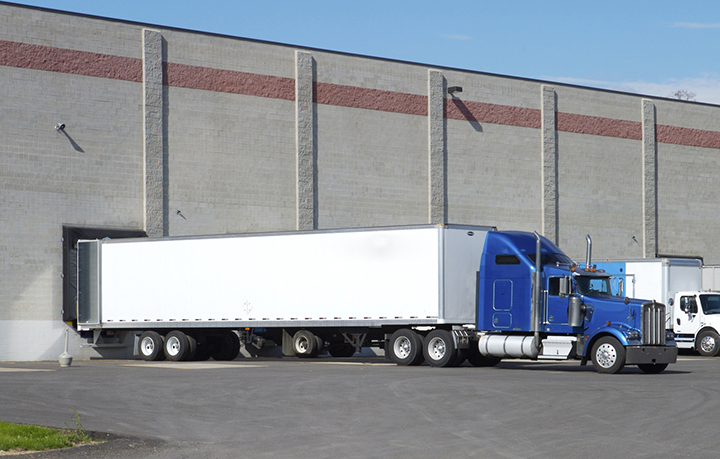As expected, May freight level reports were mixed, with some showing improvement over April and some remaining near April’s dismal levels.
The American Trucking Associations (ATA) For-Hire-Trucking Index actually fell a percentage point in May, following a 10.3% drop in April. The May Index was 106.1.
The ATA calculates its index using data from 2015 as a baseline. A score of 106.1 means freight levels reported by ATA members were 6.1% higher than the 2015 average. While that would appear to be a good thing, it’s important to note that the May index for 2020 was 9.6% lower than what was recorded for May 2019.
For the year to date, including pre-COVID-19 months of January through March, tonnage was down 2.6% compared to the same period of 2019.
While tonnage fell in May, even though other economic indicators such as retail sales and housing starts rose, Bob Costello, ATA chief economist, said he is not “overly concerned.”
“First, while down over 10% sequentially in April, truck tonnage did not fall as much as other economic indicators that month,” he explained. “This means that any rebound is tougher since tonnage didn’t fall substantially to begin with. Second, there are indications that freight continues to improve as more and more states and localities lift lockdown restrictions.”
New restrictions being announced to combat a resurgence of COVID-19 could have a negative impact on tonnage, but the amount is hard to predict.
The For-Hire Trucking Index published by ACT Research showed a different result, with significant improvements. In the ACT index, 50 represents neutral movement in the market. Higher is good; lower represents declines.
The May ACT index came in at 50.2 — not spectacular, but certainly an improvement over the April volume index, which was 30.9 points lower.
“After the worst reading in survey history in April, the Volume Index increased 30.9 points in the largest month-over-month increase in survey history in May,” said Tim Denoyer, vice president and senior analyst at ACT Research. “While we’d characterize this as neutral territory, and it may be supported by inventory rebuilding following the draw-down in March and April, it is nonetheless a much more stable volume environment.”
The Cass Freight Index, which includes shipments moving by rail, air, pipeline, ship and more, came in at 0.938. The shipments index grew by 1.6% from April but was still 23.6% beneath May 2019 numbers.
“We are now close to 80% through the second quarter of 2020, and we see volumes down double-digits for most carriers across most modes in the U.S., including truckload, LTL, intermodal, and rail,” the Cass report noted.
As the economy reopens and freight volumes begin to rebound, many truckers are keeping an eye on rates. Low freight volumes have increased the competition for available loads, driving rates downward and causing some owners to park their trucks and spurring other owner-operators to protests in Washington, D.C., and elsewhere.
The good news is that freight rates are coming back — but they still have a way to go before reaching pre-COVID-19 levels. Rates were already experiencing downward pressure earlier this year due to excess capacity in the marketplace when declines were accelerated by the slowdown of imports from Asia, followed by manufacturing shutdowns in the U.S.
As June came to an end, DAT Services reported spot rate increases across the board. Van spot rates gained 6.7%, reaching an average of $1.79 per mile compared to the May average of $1.60.
Flatbed rates rose, too, reaching an average of $2.06 per mile for June compared to May’s $1.90. Reefer rates rose for the second consecutive month, responding to harvest time for early produce. The June average of $2.14 was 12 cents per mile higher than May’s $2.02 and 21 cents above the April average of $1.93 per mile.
Fuel prices remained well below where they were a year ago, in many cases 60 cents or more. Fuel-price declines, however, are somewhat offset by reductions in paid fuel surcharges, sometimes negating the benefit to the carrier.
Overall, DAT reported that truck postings on its board were down 3.6% from the prior month while load posts grew by 16.2% Part of this is due to carriers that were using the spot market to make up for contract freight lost from their customers but are now leaving the spot market.
Cass Freight Systems, in its index report, said, “We believe the spot market (as well as the contract market) has bottomed and that the rebound in rates will depend on the strength of the recovery coupled with the pinch of industry supply from factors besides just truck production, such as rising insurance costs and limited driver supply.”
FTR’s June 30 “Monday Morning Coffee” blog by Michael Starks noted that some states were imposing business restrictions in response to a surge in coronavirus cases. The previous Friday, average stock prices fell in response to the news.
“With new cases of COVID-19 cases rising,” Starks wrote, “few businesses will want to expand operations and there are risks of localized restrictions being put back in place.”
Starks noted that more than a million people are still applying for unemployment benefits each week. Personal income fell 4.2% in May, but that was expected since the April personal income figures included government stimulus checks. Starks said the U.S. economy may not get fully rolling until a vaccine for the coronavirus is widely available.
ACT Research’s Tim Denoyer may have summed it up best.
“In short, given the magnitude of the economic shock from the pandemic, the road back might be a long one,” Denoyer said.
ACT President and Senior Analyst Kenny Vieth was cautiously optimistic in a June 25 blog entry.
“We continue to anticipate a transition into a slow recovery, that will gain speed as we proceed through the second half of this year and into 2021, with the caveat that there are still many unanswered questions about the trajectory of the virus and the impending recovery,” Vieth said.
As truckers attempt to stay above the waterline, better days are coming. How much better — and how long the wait will be — will likely be determined by a virus and the reaction to it.
Cliff Abbott is an experienced commercial vehicle driver and owner-operator who still holds a CDL in his home state of Alabama. In nearly 40 years in trucking, he’s been an instructor and trainer and has managed safety and recruiting operations for several carriers. Having never lost his love of the road, Cliff has written a book and hundreds of songs and has been writing for The Trucker for more than a decade.















